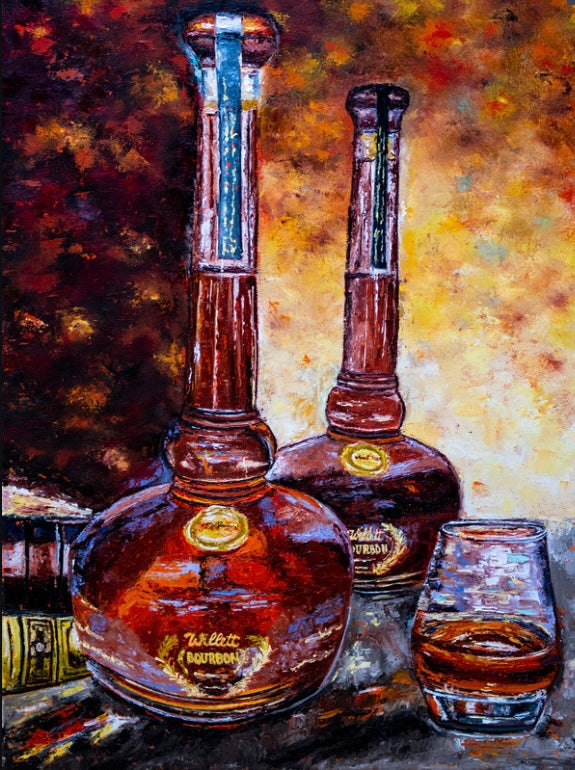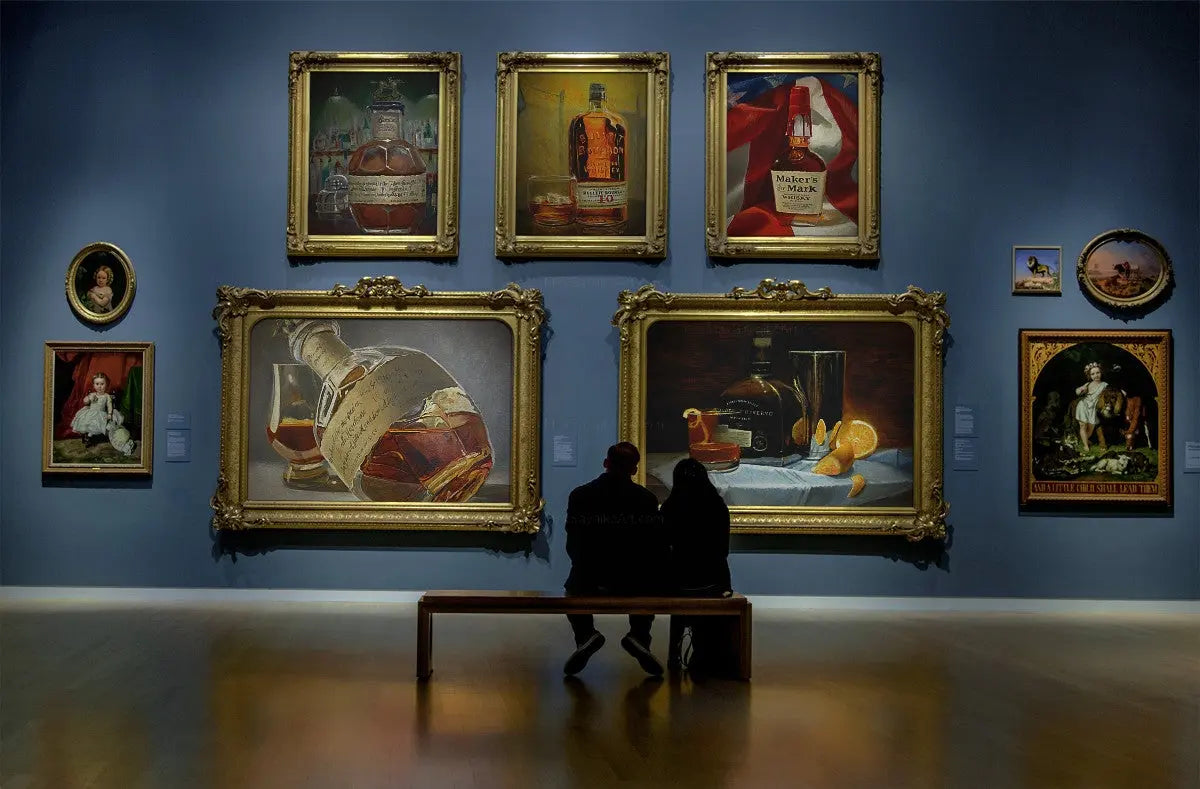Bourbon Art in Contemporary Culture: Where Practice Satisfies Development
Bourbon Art in Contemporary Culture: Where Practice Satisfies Development
Blog Article
The Relevance of Whiskey Art in Celebrating Heritage and Workmanship in the Beverage Sector
The detailed relationship between bourbon art and the party of heritage and workmanship within the drink industry can not be overemphasized. Via attentively designed containers and tags, whiskey brands encapsulate their historic origins and the artisanal skills that define their manufacturing methods.
The Historic Origins of Whiskey
At the heart of whiskey's allure exists a rich tapestry of historical origins that map back to old worlds. The beginnings of bourbon can be linked to the purification practices of the Sumerians and Babylonians around 2000 BCE, where early kinds of fermented grain drinks began to emerge. It was in the Center Ages that the art of distillation progressed considerably, especially in Ireland and Scotland, leading to the development of whiskey as we recognize it today.
The term "bourbon" itself originates from the Gaelic word "uisce beatha," indicating "water of life." This expression emphasizes the cultural significance of bourbon in Celtic cultures, where it was commonly associated with routines, events, and communal bonding. By the 15th century, purification became a recognized craft within monastic areas, paving the means for the establishment of lawful distilleries.
As profession courses expanded, scotch's popularity expanded, transcending regional limits and capturing the rate of interest of connoisseurs worldwide. Bourbon Art. This historic journey mirrors not just the craftsmanship behind whiskey production yet also its integral duty in cultural and social contexts, noting it as a considerable beverage throughout background
Artistic Expression in Branding
Whiskey branding stands as an engaging crossway of virtuosity and business, where visual identity plays a vital role in forming consumer understanding. The looks of scotch labels, packaging, and advertising products show not just the brand's tale but also its core values and heritage. With artistic expression, distilleries communicate a narrative that reverberates with customers, stimulating emotions and stimulating connections.
The use of color, typography, and images in branding serves to differentiate products in a saturated market. For instance, standard concepts might stimulate a sense of authenticity and workmanship, while modern-day layouts can signify advancement and forward-thinking. This tactical artistic instructions enhances brand acknowledgment and loyalty, enabling consumers to build an individual relationship with the scotch they select.
In addition, creative expression in branding usually serves as an event of local heritage. Distilleries regularly integrate local signs or historical recommendations into their styles, producing a feeling of place that welcomes customers to take part in a more comprehensive social experience. Inevitably, the virtuosity behind scotch branding not only improves aesthetic charm yet also enhances the overall narrative of the brand, promoting a much deeper gratitude for the craftsmanship and heritage ingrained in each container.
Craftsmanship in Bottle Layout
The creativity apparent in whiskey branding expands past visual identity to incorporate the craftsmanship associated with bottle design. Each container works as a vessel not just for the spirit within, but likewise for the tale it outlines its high quality, custom, and beginning. The layout procedure calls for precise focus to detail, as components such as form, closure, and material add dramatically to the overall assumption of the scotch.
Craftsmanship in container style includes choosing high-grade glass that can improve the whiskey's color and clarity, while likewise supplying a responsive experience for the consumer. The shape of the bottle must be both useful and aesthetically enticing, usually showing the heritage of the brand name. Lots of distilleries select distinct forms or printed logos that evoke a sense of credibility and background.
In addition, the tag design and typography play a crucial role in communicating the brand name's narrative. Limited Edition. A well-crafted container not only astounds the customer's eye yet likewise enhances the brand name's dedication to quality and practice. This way, the craftsmanship of bottle design ends you can check here up being an important facet of the bourbon experience, merging artistry with a profound respect for heritage
Cultural Significance of Whiskey Art
Celebrating custom and craftsmanship, the social relevance of bourbon art goes beyond simple appearances, linking with the social and historic narratives of the regions from which it originates. Each bottle acts as a canvas, illustrating the one-of-a-kind stories, folklore, and customs that have shaped regional whiskey-making techniques. The elaborate styles frequently mirror the heritage of the distillers, incorporating signs and concepts that reverberate with the society and worths of their areas.

On top of that, whiskey art plays an essential role in common gatherings and celebrations, functioning as a substantial web link in between individuals and their shared experiences. By appreciating the creativity in bourbon packaging, customers cultivate a much deeper understanding and respect for the craft, eventually enhancing their enjoyment of the drink itself.
Modern Trends in Scotch Discussion
In recent times, the presentation of bourbon has actually developed to mirror contemporary tastes and trends while still recognizing traditional craftsmanship - Whiskey Art. Distilleries are increasingly concentrating on visual aspects that enhance the general drinking experience, connecting the gap in between heritage and modernity
Ingenious container styles have actually arised, commonly incorporating lasting products and creative tags that inform engaging tales. Several brand names now team up with local artists, infusing their items with special visual expressions that reverberate with consumers. Furthermore, limited-edition launches are typically packaged in collectible containers, adding worth and charm for aficionados.

Verdict
In conclusion, bourbon art offers as a crucial channel for revealing the heritage and workmanship fundamental in the drink industry. With elaborate branding, ingenious container designs, and culturally significant imaginative components, scotch brands efficiently recognize their practices and connect with consumers.


Craftsmanship in container design involves picking high-grade glass that can enhance the whiskey's shade and clearness, while likewise supplying a responsive experience for the consumer. In this means, the craftsmanship of bottle design comes to be an essential element of the bourbon experience, combining creativity with a profound regard for heritage.
In verdict, bourbon art offers as an essential conduit for expressing the heritage and workmanship fundamental in the drink market.
Report this page